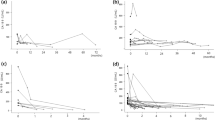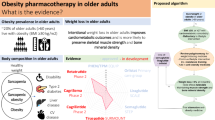Abstract
Background/objectives:
To implement nutritional risk screening and evaluate the relationship of nutritional risk to complication rate and quality of life in patients with cancer.
Subjects/methods:
A total of 687 patients with cancer from two teaching hospitals in China were consecutively enrolled. Data were collected on the nutritional risk screening, application of nutritional support, complication and quality of life.
Results:
The prevalence of nutritional risk at admission among the total, younger and elderly patients was 45.6%, 38.7% and 58.0%, respectively. There was a significant increase in the prevalence from admission to 2 weeks after admission in all patients (P=0.011). The prevalence in those patients ⩾70 years was significantly higher than that in the younger ones (P<0.001). The highest prevalence of nutritional risk was in pancreas cancer (81.8%). Only 46.7% of at-risk patients received nutritional support and the average PN:EN ratio was 7.0:1. Complications were noted in 29.0% of all patients and were significantly more frequent in ‘at-risk’ patients (P<0.001). Among the scales of quality of life (SF-36), the scores of physical functioning (P<0.001), role-physical (P<0.001), bodily pain (P=0.012), energy/fatigue (P<0.001) and general health (P<0.001) were significant lower in the patients at risk.
Conclusions:
A large proportion of cancer inpatients were at nutritional risk and tended to worsen during the course of admission, which has been associated with increased complication rate and lower scores of quality of life. The application of PN and EN was inappropriate in patients with cancer in China.
This is a preview of subscription content, access via your institution
Access options
Subscribe to this journal
Receive 12 print issues and online access
$259.00 per year
only $21.58 per issue
Buy this article
- Purchase on Springer Link
- Instant access to full article PDF
Prices may be subject to local taxes which are calculated during checkout

Similar content being viewed by others
References
Van Cutsem E, Arends J . The causes and consequences of cancer-associated malnutrition. Eur J Oncol Nurs 2005; 9: S51–S63.
Tong H, Isenring E, Yates P . The prevalence of nutrition impact symptoms and their relationship to quality of life and clinical outcomes in medical oncology patients. Support Care Cancer 2009; 17: 83–90.
Bozzetti F, Mariani L, Vullo SL The SCRINIO Working Group Amerio ML, Biffi R et al. The nutritional risk in oncology: a study of 1,453 cancer outpatients. Support Care Cancer 2012; 20: 1919–1928.
Jie B, Jiang ZM, Nolan MT, Efron DT, Zhu SN, Yu K et al. Impact of nutritional support on clinical outcome in patients at nutritional risk: a multicenter, prospective cohort study in Baltimore and Beijing teaching hospitals. Nutrition 2010; 26: 1088–1093.
Kondrup J, Rasmussen HH, Hamberg O, Stanga Z, Ad Hoc ESPEN Working Group. Nutritional risk screening (NRS 2002): a new method based on an analysis of controlled clinical trials. Clin Nutr 2003; 22: 321–336.
Sorensen J, Kondrup J, Prokopowicz J, Schiesser M, Krahenbuhl L, Meier R et al. EuroOOPS: an international, multicentre study to implement nutritional risk screening and evaluate clinical outcome. Clin Nutr 2008; 27: 340–349.
Kondrup J, Allison SP, Elia MB, Vellas B, Plauth M, Educational and Clinical Practice Committee, European Society of Parenteral and Enteral Nutrition (ESPEN). ESPEN guidelines for nutrition screening 2002. Clin Nutr 2003; 22: 415–421.
Mueller C, Compher C, Ellen DM, The American Society for Parenteral and Enteral Nutrition (ASPEN) Board of Directors. ASPEN. clinical guidelines: nutrition screening, assessment, and intervention in adults. JPEN 2011; 35: 16–24.
Kyle UG, Kossovsky MP, Karsegard VL, Pichard C . Comparison of tools for nutritional assessment and screening at hospital admission: a population study. Clin Nutr 2006; 25: 409–417.
Ware JE Jr, Gandek B, Kosinski M, Aaronson NK, Apolone G, Brazier J et al. The equivalence of SF-36 summary health scores estimated using standard and country-specific algorithms in 10 countries: results from the International Quality of Life Assessment (IQOLA) Project. J Clin Epidemiol 1998; 51: 1167–1170.
Obesity Working Group, International Life Science Association of China (WGOC). Recommendation of Chinese adults’ body mass index reference. Chinese J Prev Med 2001; 35: 349–350.
Lochs H, Allison SP, Meier R, Pirlich M, Kondrup J, Schneider S et al. Introductory to the ESPEN guidelines on enteral nutrition: terminology, definitions and general topics. Clin Nutr 2006; 25: 180–186.
Jiang ZM, Chen W, Zhan WH, Jiang H, Cai W, Zhang S et al. Parenteral and enteral nutrition application in west, middle and east China: a multi-center investigation for 15098 patients in 13 metropolitans using Nutritional Risk Screening 2002 tool. Clin Nutr 2007; 2: S133–S134.
American College of Chest Physicians/Society of Critical Care Medicine Consensus Conference: definitions for sepsis and organ failure and guidelines for the use of innovative therapies in sepsis. Crit Care Med 1992; 20: 864–873.
Hays RD, Kallich JD, Mapes DL, Coons SJ, Carter WB . Development of the kidney disease quality of life (KDQOL) instrument. Qual Life Res 1994; 3: 329–338.
Amaral TF, Antunes A, Cabral S, Alves P, Kent-Smith L . An evaluation of three nutritional screening tools in a Portuguese oncology center. J Hum Nutr Diet 2008; 21: 575–583.
Liang X, Jiang ZM, Nolan MT, Efron DT, Kondrup J . Comparative survey on nutritional risk and nutritional support between Beijing and Baltimore teaching hospitals. Nutrition 2008; 24: 969–976.
Gavazzi C, Colatruglio S, Sironi A, Mazzaferro V, Miceli R . Importance of early nutritional screening in patients with gastric cancer. Br J Nutr 2011; 106: 1773–1778.
Norman K, Stobaus N, Smoliner C, Zocher D, Scheufele R, Valentini L et al. Determinants of hand grip strength, knee extension strength and functional status in cancer patients. Clin Nutr 2010; 29: 586–591.
Norman K, Stobaus N, Zocher D, Bosy-Westphal A, Szramek A, Scheufele R et al. Cutoff percentiles of bioelectrical phase angle predict functionality, quality of life, and mortality in patients with cancer. Am J Clin Nutr 2010; 92: 612–619.
Capuano G, Gentile PC, Bianciardi F, Tosti M, Palladino A, Di Palma M . Prevalence and influence of malnutrition on quality of life and performance status in patients with locally advanced head and neck cancer before treatment. Support Care Cancer 2010; 18: 433–437.
Pressoir M, Desné S, Berchery D, Rossignol G, Poiree B, Meslier M et al. Prevalence, risk factors and clinical implications of malnutrition in French Comprehensive Cancer Centres. Br J Cancer 2010; 102: 966–971.
Nourissat A, Vasson MP, Merrouche Y, Bouteloup C, Goutte M, Mille D et al. Relationship between nutritional status and quality of life in patients with cancer. Eur J Cancer 2008; 44: 1238–1242.
Amaral TF, Antunes A, Cabral S, Alves P, Kent-Smith L . An evaluation of three nutritional screening tools in a Portuguese oncology centre. J Hum Nutr Diet 2008; 21: 575–583.
Gupta D, Lis CG, Granick J, Grutsch JF, Vashi PG, Lammersfeld CA . Malnutrition was associated with poor quality of life in colorectal cancer: a retrospective analysis. J Clin Epidemiol 2006; 59: 704–709.
Petruson KM, Silander EM, Hammerlid EB . Quality of life as predictor of weight loss in patients with head and neck cancer. Head Neck 2005; 27: 302–310.
Galvan O, Joannidis M, Widschwendter A, Bonatti H, Sprinzl GM, Rehak P et al. Comparison of different scoring methods for assessing the nutritional status of hospitalised patients. Wien Klin Wochenschr 2004; 116: 596–602.
Scott HR, McMillan DC, Brown DJ, Forrest LM, McArdle CS, Milroy R . A prospective study of the impact of weight loss and the systemic inflammatory response on quality of life in patients with inoperable non-small cell lung cancer. Lung Cancer 2003; 40: 295–299.
Isenring E, Bauer J, Capra S . The scored Patient-generated Subjective Global Assessment (PG-SGA) and its association with quality of life in ambulatory patients receiving radiotherapy. Eur J Clin Nutr 2003; 57: 305–309.
Kondrup J, Johansen N, Plum LM, Bak L, Larsen IH, Martinsen A et al. Incidence of nutritional risk and causes of inadequate nutritional care in hospitals. Clin Nutr 2002; 21: 461–468.
Rasmussen HH, Kondrup J, Staun M, Ladefoged K, Kristensen H, Wengler A . Prevalence of patients at nutritional risk in Danish hospitals. Clin Nutr 2004; 23: 1009–1015.
Waitzberg DL, Caiaffa WT . Correia MITD. Hospital malnutrition: the Brazilian national survey (IBRANUTRI): a study of 4000 patients. Nutrition 2001; 17: 573–580.
Ravasco P, Monteiro-Grillo I, Camilo ME . Does nutrition influence quality of life in cancer patients undergoing radiotherapy? Radiother Oncol 2003; 67: 213–220.
Marin Caro MM, Laviano A, Pichard C . Impact of nutrition on quality of life during cancer. Curr Opin Clin Nutr Metab Care 2007; 10: 480–487.
Acknowledgements
We appreciate the Chinese Society for Parenteral and Enteral Nutrition for the support of this study. Moreover, we convey our deep gratitude to the staffs in the Peking Union Medical College Hospital and Fifth Affiliated Hospital of Nanchang University for their kindly cooperation and support. This work was financially supported by CSPEN and a grant from Wu JP Medical Research Foundation (no. 2005-01).
Author information
Authors and Affiliations
Corresponding author
Ethics declarations
Competing interests
The authors declare no conflict of interest.
Rights and permissions
About this article
Cite this article
Yu, K., Zhou, Xr. & He, Sl. A multicentre study to implement nutritional risk screening and evaluate clinical outcome and quality of life in patients with cancer. Eur J Clin Nutr 67, 732–737 (2013). https://doi.org/10.1038/ejcn.2013.81
Received:
Revised:
Accepted:
Published:
Issue Date:
DOI: https://doi.org/10.1038/ejcn.2013.81
Keywords
This article is cited by
-
Prognostic potential of nutritional risk screening and assessment tools in predicting survival of patients with pancreatic neoplasms: a systematic review
Nutrition Journal (2024)
-
Prevalence of hospital malnutrition in cancer patients: a sub-analysis of the PREDyCES® study
Supportive Care in Cancer (2016)



